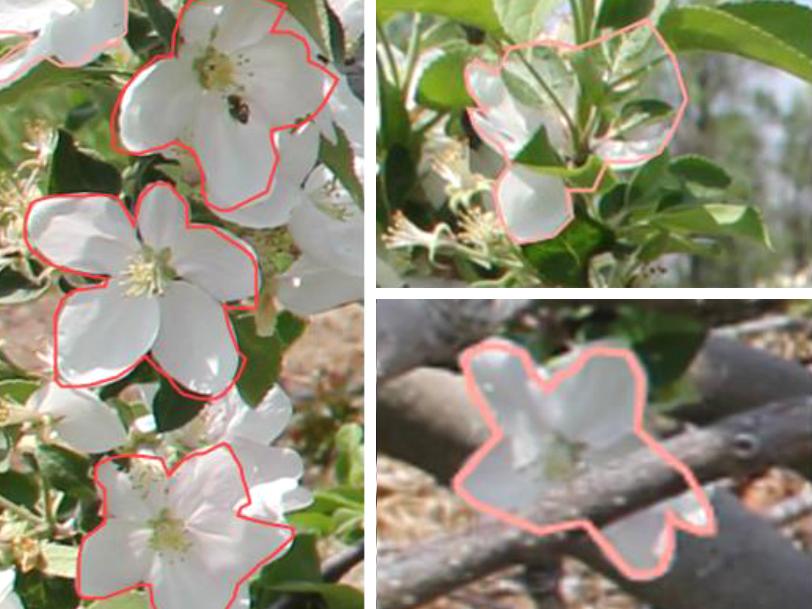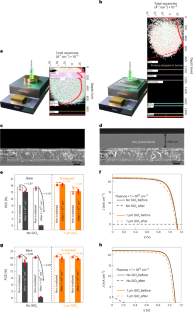2023-01-26 ペンシルベニア州立大学(PennState)

◆リンゴの花は、4〜6個の花が枝に付着して群生しており、中央の花は中心花と呼ばれる。この花は群れの中で最初に開き、通常、最も大きな実をつける。そのため、ロボット受粉システムの重要なターゲットであると、研究者のLong He(農業・生物工学部助教授)は述べています。
◆リンゴの生産性向上のために、従来は昆虫による受粉が頼られてきました。しかし、コロニー崩壊症候群のために、世界中のミツバチが驚くほどのスピードで死んでいます。その結果、生産者は受粉の代替手段を必要としています。
◆この研究は、農学部のHe教授の研究グループが行った最新のもので、労働集約型の農業作業を実現するロボットシステムの開発に取り組んでいる。このプロジェクトの主な目的は、樹冠に咲く中心花を正確に識別し、その位置を特定できる深層学習ベースのビジョンシステムを開発することだと彼は説明します。
◆農業生物工学科の博士課程学生であるXinyang Muは、中心花の研究の陣頭指揮を執りました。Muは、マスクR-CNN(画素レベルの分割を行い、他の物体によって部分的に隠されている物体を検出する、一般的な深層学習コンピュータープログラム)を使用して、マシンビジョンシステムで中心花の識別と位置の特定を行った。
◆「中心花と側花を区別するために、それぞれの花房の中で最も中心にある花をターゲットとし、つまり局在化しました。「視覚システムは、2次元の花密度マッピングに基づいて、花房を個別に自動配置しました。検出された各花群内で、最も中心的な位置にある花(またはマスク)が、ターゲットとなる中心花として決定されました。”
◆Smart Agricultural Technologyに最近掲載された研究成果では、Muのアルゴリズムによる王冠の花の検出精度が高いことが報告されています。研究者たちが目視で確認しながら手動で計測したもの(研究者たちはグランドトゥルース計測と呼んでいます)と比較すると、マシンビジョンによる王冠の花の検出精度は98.7%から65.6%とばらつきがあることがわかります。
<関連情報>
- https://www.psu.edu/news/research/story/machine-vision-system-developed-capable-locating-king-flowers-apple-trees/
- https://www.sciencedirect.com/science/article/pii/S2772375522001150
精密受粉のためのマスクR-CNNによるリンゴ花検出と王冠花同定 Mask R-CNN based apple flower detection and king flower identification for precision pollination
Xinyang Mu,LongHe,Paul Heinemann,James Schupp,Manoj Karkee
Smart Agricultural Technology Available online :12 December 2022
DOI:https://doi.org/10.1016/j.atech.2022.100151

Highlights
- •A mask R-CNN-based algorithm was developed to identify apple flowers in a field environment.
- •Apple flower and flower buds within a canopy including occlusions were detected with a precision of 78.2%.
- •Image processing approaches were implemented to detect king flowers within each flower cluster.
- •The king flower detection accuracy ranged from 98.7% to 65.6% with the development of flowering stage.
Abstract
Identification of individual king flowers within flower clusters is a critical step for developing a robotic apple pollination system. Typically, each cluster has five to six individual flowers, and the king flower can be occluded by the lateral flowers because of their central position in a flower cluster. King flowers share identical features (e.g., color, shape, and size) with other flowers. Apple flower clusters open sequentially from the king flower to the lateral flowers in the time of anthesis, which presents an opportunity for selective pollination. Therefore, it is critical to monitor the flower blooming stage for accurately determining the pollination targets and timing. In this study, a machine vision system was developed to acquire images for two apple varieties in the orchard environment. A Mask R-CNN-based detection model followed by a king flower segmentation algorithm were developed to identify and locate the king flowers from an apple flower dataset throughout the blooming stage from first king bloom to full bloom. The flower detection accuracy resulting from the algorithm were compared with ground truth measurements. The king flower detection accuracy varied from 98.7% to 65.6% with respect to the flower stages of 20% to 80% blooming. This information can be used to calculate the percentage of the king flowers and the distribution in the tree canopy. Along with horticultural knowledge, the outcome from the study is expected to provide decision-making information for robotic pollination.



